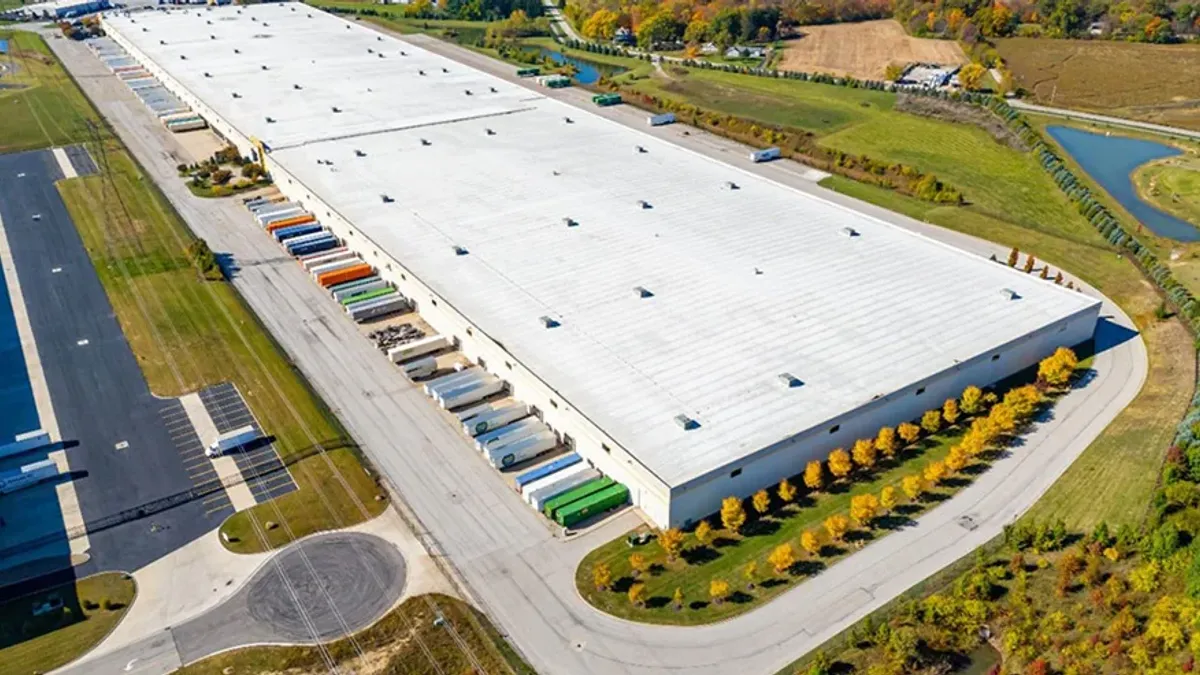"The new normal is change."
The seemingly paradoxical words spoken by Kevin Abbott, Vice President of Truckload at C.H. Robinson, resonated as a theme throughout sessions and conversations at the Council of Supply Chain Management Professionals' Edge 2018 conference in Nashville, Tennessee.
Freight capacity constraints are changing the dynamics between shippers and carriers. E-commerce is changing logistics down to the last yard.
Even 170-year-old company Morton Salt had to make changes. Don't worry — the girl with the umbrella isn't going away. But the company did have to closely examine and overhaul its TMS to create a more nimble supply chain with easily accessible data.
If there's one constant in all of this, it's change, and as sessions at Edge 2018 revealed, technology is a big driver of the transforming supply chain.
New tech has plenty of fans and plenty of skeptics
Internet of Things (IoT), blockchain, 4D printing, machine learning — the list of emerging technologies seems endless.
Blockchain in particular has mystified supply chains, with just a few players starting to realize its potential for tracking and visibility. The technology was the central theme of at least a dozen sessions during the conference.
"If you haven’t started, now is the time," Joanne Wright, Vice President of Enterprise Operations and Services at IBM, said during Monday's opening session at Edge.
But some speakers at the conference warned against getting caught up in the buzz surrounding blockchain. "Don't fall into FOMO," said Brian Gibson, executive director of the Center for Supply Chain Innovation at Auburn University.
Alliances have formed around blockchain, with like-minded companies joining forces to figure out the best use cases for the technology in their industries. While some businesses may suffer from "fear of missing out" if they don't hop on the bandwagon, others are approaching blockchain with a critical eye.
In one session, a Walmart executive explained pilot projects where the retailer was working with suppliers to track food products. An attendee raised the question of how willing and able are farmers around the globe to enter data into ledgers. That question set off a domino effect, as other attendees wondered how retailers and manufacturers can ensure data entered from several tiers of suppliers is accurate.
Logistics and tech saves lives every day
With Edge 2018 taking place in the midst of hurricane season, Florence was top of mind for many attendees. Unfolding at the same time was a destructive earthquake and tsunami in Indonesia that has now left more than 2,000 people dead.
When crisis strikes, logistics plays a huge role in getting much needed supplies to devastated communities. The last mile is challenging on its own. Add to that poor weather conditions, road closures, life-saving products in short supply and a host of other factors — now maybe the typical last mile doesn't seem so tough.
Feeling energized from the keynote this morning -- @zipline is taking final mile to new heights! Thanks for providing such inspiring sessions and speakers, #CSCMPEdge. pic.twitter.com/mMYxGAllEI
— Convey (@get_convey) October 2, 2018
Risk is in the nature of a profession centered on the movement of goods, and supply chain professionals are increasingly adept at putting out fires. As Kathy Fulton, executive director of the American Logistics Aid Network (ALAN), put it, not all risk managers understand supply chain — but every supply chain manager understands risk.
One of the most inspiring sessions at the conference was Tuesday's opening session, presented by Keller Rinaudo, CEO of Zipline. The company uses drones to deliver blood in Rwanda, where infrastructure and deliveries by van or truck are not always reliable.
Zipline’s story wasn't one of instant success. There were failures before progress came and a learning curve for all the players involved.
Today, the results have shown that persistence pays off. Zipline has made nearly 3,000 blood deliveries to hospitals in Rwanda by drone and achieved 0% waste in the country's blood supply. The company is looking at expanding the concept to Ghana and even parts of the U.S.
Rinaudo’s presentation concluded with a look at the impact of drones in supply chain resilience and was met by thunderous applause and a standing ovation from attendees.
We should work smarter, not harder
Walking through the exhibition hall is always exciting, seeing the latest gadgets and gizmos and picking up a free pen or stress ball.
Several exhibitors displayed robots that promise to improve efficiency of the supply chain and take manual, repetitive labor off the shoulders of workers.
IBM's Wright emphasized artificial intelligence as an opportunity that many businesses can take advantage, and not a threat to labor.
Overheard at #CSCMPEDGE: Passerby: What is that? It’s so cute!
— SupplyChainQuarterly (@TheQuarterly) September 30, 2018
Locus Robotics rep: It’s an autonomous warehouse robot.
Passerby: Does it talk?
Rep: No, it picks items in a warehouse. pic.twitter.com/ZA6vF6HGxk
But technology can’t fulfill every task — well, at least not yet. Sometimes those tasks add up to a lengthy to-do list, and 40-hour work weeks quickly devolve into 50 and even 60 hours.
For the sake of productivity — not to mention our mental health and sanity — closing session speaker Alexander Kjerulf said, forget the 60-hour work weeks. The chief happiness officer of Woohoo inc (yes, that's really his title) said the first three weeks might lead to increased output, but productivity drops dramatically after that.
Meanwhile, the tortoise chugging along at the 40-hour work week wins the race, slow and steady.























